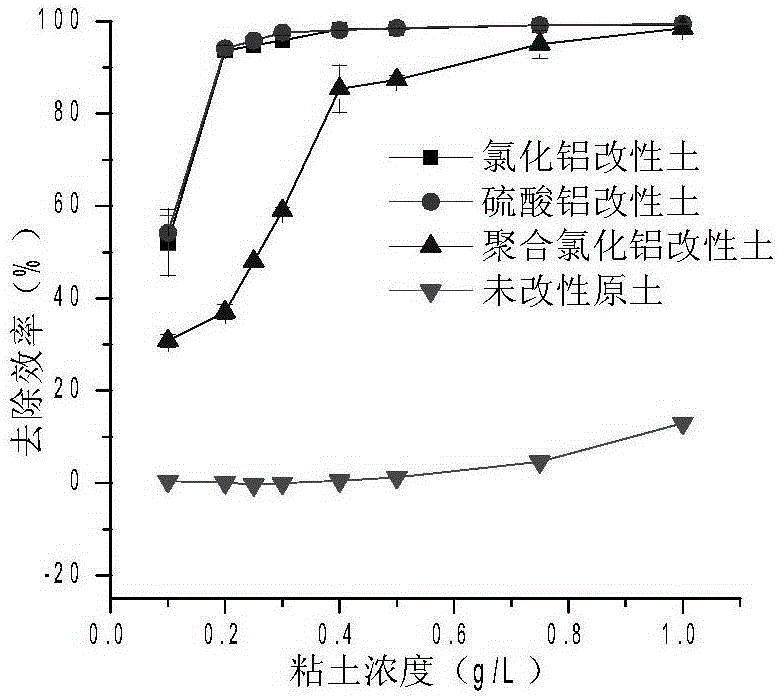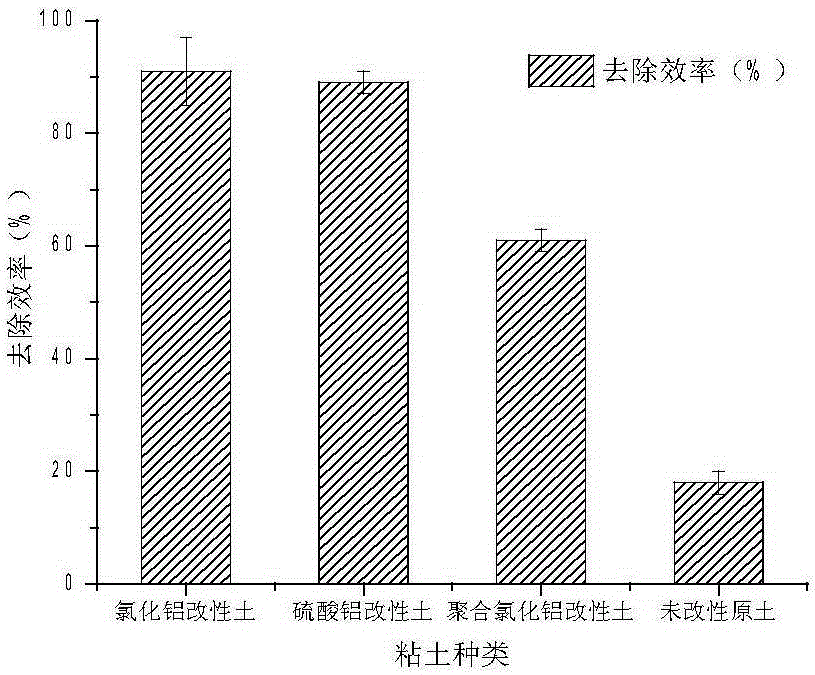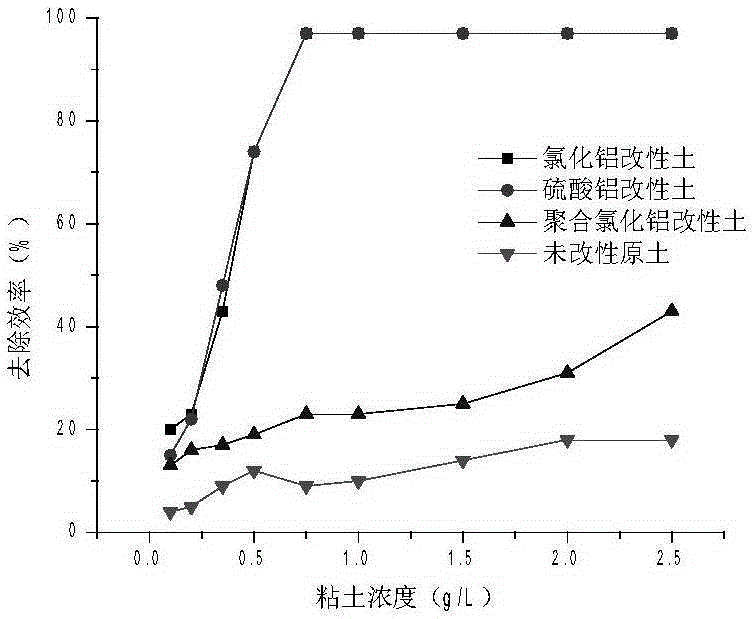Modified clay capable of eliminating red tide with high efficiency
A modified clay technology, which is applied in seawater treatment, flocculation/sedimentation water/sewage treatment, etc., can solve the problems of algae cell breakage, secondary pollution, high oxidant dose, etc., and achieve the goal of improving binding capacity, reducing dosage, and enhancing binding Effect
- Summary
- Abstract
- Description
- Claims
- Application Information
AI Technical Summary
Problems solved by technology
Method used
Image
Examples
Embodiment 1
[0023] Use inorganic aluminum salts as modifiers (inorganic aluminum salts are aluminum chloride, aluminum sulfate or polyaluminum chloride), make it into a certain concentration of aqueous solution, and then add powder clay minerals in proportion, use alkalization (such as caustic Potassium, caustic soda, soda ash, quicklime, slaked lime, etc.) to adjust the pH value of the mixture to 4-6, and obtain different types of modified clay suspensions after aging and stabilization. Among them, the aluminum concentration in the modified clay suspension is 2.85×10 -2 The removal of Chrysococcus (cell density 1.2×10 7 cells / ml) as an example, add the above-mentioned different types of modified clay to the algae liquid to reach 0.10, 0.20, 0.25, 0.30, 0.40, 0.50, 0.75, 1.0g / L, shake well, and observe after 2.5 hours Changes in the cell density of Chrysococcus spp. in algae fluid. The algae removal efficiency of various modified clay compositions at different concentrations is as follo...
Embodiment 2
[0025] As described in Example 1, the efficiency of the above-mentioned different types of modified clays for removing high-density chlorella in water bodies was determined, and compared with unmodified clays of the same concentration. The cell density of Chlorella used was 1.12×10 8 cells / ml, add modified clay to a concentration of 0.40g / L, shake well, and observe the algae removal efficiency after standing still for 2.5 hours. Algae removal efficiency of different clays such as figure 2 As shown, the results show that the algae removal efficiency of aluminum chloride modified soil or aluminum sulfate modified soil is higher (see figure 2 ).
Embodiment 3
[0027] As described in Example 1, the efficiency of the above-mentioned different types of modified clays in removing high-density Heterocurvium akashiwo in water bodies was determined, and compared with the same concentration of unmodified clays. The cell density of H. akashiwo used was 7.2×10 4 cells / ml, add modified clay to a concentration of 0.10, 0.20, 0.35, 0.50, 0.75, 1.0, 1.5, 2.0, 2.5g / L, shake well, and observe the algae removal efficiency after standing still for 2.5 hours. Algae removal efficiency as image 3 As shown, the results show that the algae removal efficiency of aluminum chloride modified soil or aluminum sulfate modified soil is higher (see image 3 ).
PUM
| Property | Measurement | Unit |
|---|---|---|
| particle size | aaaaa | aaaaa |
Abstract
Description
Claims
Application Information
 Login to View More
Login to View More - R&D
- Intellectual Property
- Life Sciences
- Materials
- Tech Scout
- Unparalleled Data Quality
- Higher Quality Content
- 60% Fewer Hallucinations
Browse by: Latest US Patents, China's latest patents, Technical Efficacy Thesaurus, Application Domain, Technology Topic, Popular Technical Reports.
© 2025 PatSnap. All rights reserved.Legal|Privacy policy|Modern Slavery Act Transparency Statement|Sitemap|About US| Contact US: help@patsnap.com



